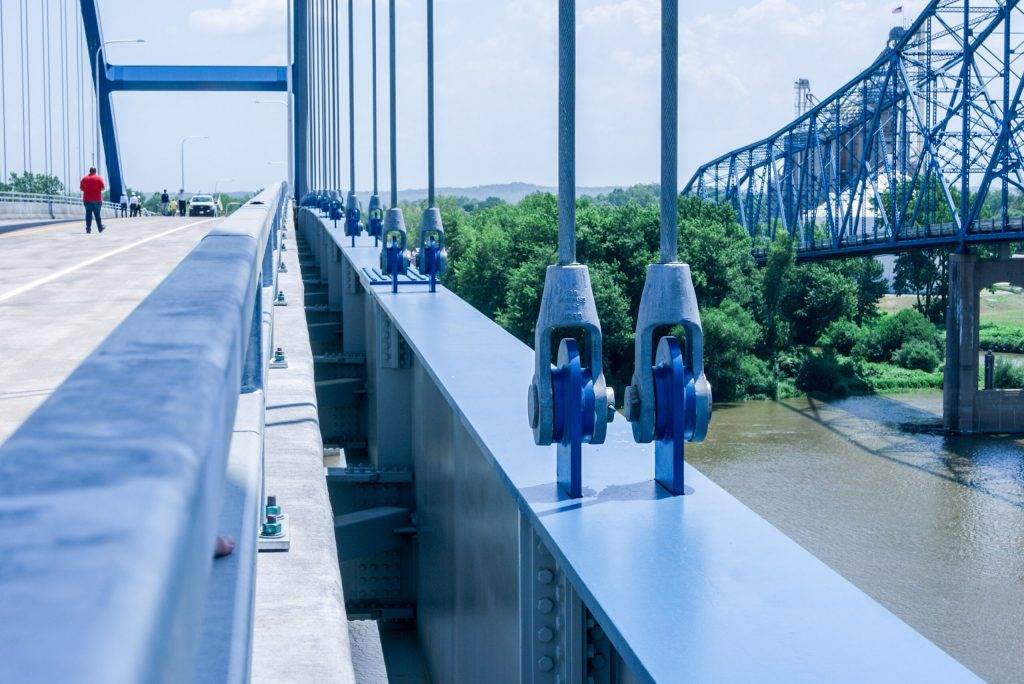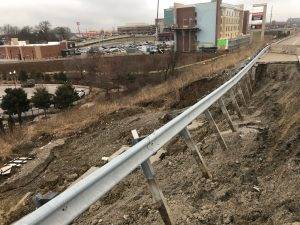Our industry is evolving to make infrastructure more resilient. Designing and constructing resilient projects that can meet their intended uses under adverse conditions or to quickly recover from a catastrophe may lead to smarter decisions when funding is limited.For example, the most recent proposed federal transportation bill, the Investing in a New Vision for the Environment and Surface Transportation in America Act (INVEST), would create a new four-year program to invest over $6 billion to fund resilience and emergency evacuation projects. States and metropolitan planning organizations will be required to assess the vulnerability of their infrastructure to better guide infrastructure investments. The same bill will also incorporate resilience into the federal-aid highway program. After catastrophic weather and other extreme events, the highway will be evaluated to determine what protective features could be incorporated to make it more resilient to future events.
 Hanson assisted Halverson Construction Co. Inc. with construction engineering for a new, 2,128-foot-long bridge carrying Illinois 104 over the Illinois River in Meredosia. The new structure, which has two 12-foot lanes and 10-foot shoulders on each side, replaces a narrower, two-lane bridge (shown right) that was built in 1936 and demolished after the new bridge opened.
Hanson assisted Halverson Construction Co. Inc. with construction engineering for a new, 2,128-foot-long bridge carrying Illinois 104 over the Illinois River in Meredosia. The new structure, which has two 12-foot lanes and 10-foot shoulders on each side, replaces a narrower, two-lane bridge (shown right) that was built in 1936 and demolished after the new bridge opened.
According to Wikipedia, in the fields of engineering and construction, resilience is described as “the ability to absorb or avoid damage without suffering complete failure and is an objective of design, maintenance and restoration for buildings and infrastructure, as well as communities.” Erik Hollnagel, author of “What is Resilience Engineering,” says resilient performance “… is not just to be able to recover from threats and stresses, but rather to be able to perform as needed under a variety of conditions — and to respond appropriately to both disturbances and opportunities.”
Adding resiliency elements to project designs
 After a heavy rainfall in 2018, the shoulder of the eastbound on-ramp from Interstate 64 to Hanley Road in St. Louis County, Missouri, slid down an adjacent slope, leaving a large gap in the roadway. Hanson worked with the Missouri Department of Transportation to repair the roadway and embankment, which included providing construction and slope stabilization plans.
After a heavy rainfall in 2018, the shoulder of the eastbound on-ramp from Interstate 64 to Hanley Road in St. Louis County, Missouri, slid down an adjacent slope, leaving a large gap in the roadway. Hanson worked with the Missouri Department of Transportation to repair the roadway and embankment, which included providing construction and slope stabilization plans.
When it comes to roadway projects, our design teams can incorporate features to improve the infrastructure’s resiliency, including raising roadway grades; relocating roadways to higher elevations (especially above projected flood elevations); relocating roads away from unstable terrain conditions, (or look to stabilize any slopes); providing longer and higher bridges over waterways; increasing the capacity of open and closed drainage elements; reducing impacts to our bridges, such as scour protection and increased vertical clearance; improving seismic resistance; reducing potential roadside impacts; and finding opportunities to improve travel capacity.
As technology and research advances, even more new opportunities to improve infrastructure resiliency will be possible. Both the Federal Highway Administration (FHWA) and the National Cooperative Highway Research Program (NCHRP) fund research projects that will lead to such improvements. The NCHRP is a national research program carried out through the collaborative efforts of the FHWA, American Association of State Highway Transportation Officials and the National Academy of Sciences, Engineering and Medicine. It conducts research in acute problem areas that affect highway planning, design, construction, operation and maintenance nationwide. I’ve been fortunate to participate in several research projects with the NCHRP and FHWA.
 During the reconstruction of the Jane Addams Memorial Tollway (Interstate 90) for the Illinois Tollway in Boone, McHenry and Kane counties, Hanson designed more than 10 bridges, raising the vertical clearance and improving the structure’s resiliency.
During the reconstruction of the Jane Addams Memorial Tollway (Interstate 90) for the Illinois Tollway in Boone, McHenry and Kane counties, Hanson designed more than 10 bridges, raising the vertical clearance and improving the structure’s resiliency.
Being involved with this important research and willing to embrace new technologies provides opportunities for Hanson to learn and apply this knowledge in innovative ways to benefit our clients, such as identifying “assets” along the road using our mobile mapper and field crews; using technology to capture the location, take a picture and fill out forms with more information; and assessing consequences from damage and loss of functionality (risk analysis).
In an upcoming article, we will highlight how engineers can incorporate safety and resiliency features into infrastructure, transportation and planning projects.
For more information or ideas on how to add resiliency elements to your projects, contact David McDonald Jr., P.E., PTOE, Ph.D., at dmcdonald@hanson-inc.com. David is a vice president, roadway discipline manager and chief roadway engineer at Hanson. He has been with the company since 2002 and works at the Chicago regional office.
This post previously appeared on Hanson’s Designed to Move blog.